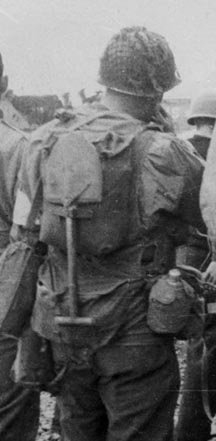Case Fatality Rate (CFR)= 100 * (KIA + DOW) / (KIA + WIA)
KIA=Killed in Action; DOW=Died of Wounds; WIA=Wounded in Action.
The CFRs in WW2, Vietnam and Iraq were 19.1, 15.8 and 9.1. There is a great reduction in 60 years thanks to better protection, faster evacuation and better surgery technique.
What could have been done to reduce the death-wound ratio from 1:4 to 1:6 in WW2 without Alien Space Bats? For example, Cardiopulmonary Resuscitation (CPR) invented in 1960 requires no equipment that couldn't be produced in WW2, and Band-Aid invented in 1920 was totally feasible to be mass-utilized in WW1.
As a starting point, steel cuirass of .2"/5mm thickness (with gorget to protect the neck from splashing debris of lead core and brass jacket) should be able to stop a Fully Powered Cartridge at close range (if not, 1/4"/6.2mm should be enough at that time), preventing deadly wounds but increasing the possibility of limb damage. Such armor in SAPI cut should weigh 6 lbs/2.7kg a piece.
The Americans, the Brits and the Russians did equip less protective body armor, and the Russians tested SN-40A with 4.2/5.2mm 36SGNA steel which didn't enter service in the chaos of Operation Barbarossa.
Reference: https://learning-media.allogy.com/api/v1/pdf/59ca4340-e2f2-4a1d-92d9-ee0398092628/contents
Postscriptum:
Did G.I. of US use their entrenching shovel as back armor plate, spontaneously or required by any Field Manual? If so, has anyone been saved by it?

If M-1943 intrenching tool were made of 1.5mm 1/16" manganese Steel, it should be able to stop a .45 ACP round if not 9mm Parabellum and shrapnel.
KIA=Killed in Action; DOW=Died of Wounds; WIA=Wounded in Action.
The CFRs in WW2, Vietnam and Iraq were 19.1, 15.8 and 9.1. There is a great reduction in 60 years thanks to better protection, faster evacuation and better surgery technique.
What could have been done to reduce the death-wound ratio from 1:4 to 1:6 in WW2 without Alien Space Bats? For example, Cardiopulmonary Resuscitation (CPR) invented in 1960 requires no equipment that couldn't be produced in WW2, and Band-Aid invented in 1920 was totally feasible to be mass-utilized in WW1.
As a starting point, steel cuirass of .2"/5mm thickness (with gorget to protect the neck from splashing debris of lead core and brass jacket) should be able to stop a Fully Powered Cartridge at close range (if not, 1/4"/6.2mm should be enough at that time), preventing deadly wounds but increasing the possibility of limb damage. Such armor in SAPI cut should weigh 6 lbs/2.7kg a piece.
The Americans, the Brits and the Russians did equip less protective body armor, and the Russians tested SN-40A with 4.2/5.2mm 36SGNA steel which didn't enter service in the chaos of Operation Barbarossa.
Reference: https://learning-media.allogy.com/api/v1/pdf/59ca4340-e2f2-4a1d-92d9-ee0398092628/contents
Postscriptum:
Did G.I. of US use their entrenching shovel as back armor plate, spontaneously or required by any Field Manual? If so, has anyone been saved by it?
If M-1943 intrenching tool were made of 1.5mm 1/16" manganese Steel, it should be able to stop a .45 ACP round if not 9mm Parabellum and shrapnel.
Last edited:
